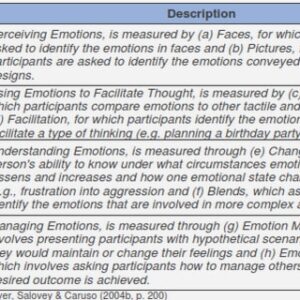(Downloads - 0)
For more info about our services contact : help@bestpfe.com
Table of contents
Chapter 1 Introduction
1.1 Summary of the context
1.2 Biodiversity in the open ocean
1.2.1 Biodiversity Hotspots: history, definition and challenges
1.2.2 What is biodiversity and why is important
1.2.3 What do we know about global patterns of biodiversity in the open ocean
1.2.4 Which kind of biodiversity to measure
1.2.5 How do we measure biodiversity: Indexes, Rank Abundance Distributions (RADs), Q-matrixes
1.2.6 Introducing the concept of functional types to study plankton community ecology
1.3 Plankton as keystone component in the functioning of the marine ecosystem
1.3.1 Overview of plankton ecology and biogeography
1.3.2 Phytoplankton biology and distribution
1.3.3 Oceanographic structures shaping plankton distribution
1.3.4 The interaction between phytoplankton and the turbulent dynamics of the ocean
1.3.5 Remote sensing a promising tool to investigate phytoplankton distribution
1.4 Objectives
Chapter 2 Materials and Methods
2.1 Modelling approaches to measure global biodiversity
2.1.1 The Darwin model: coupled physical and ecological model of the global ocean
2.1.2 Computation and relationship of the ‘local’ and ‘seascape’ diversity in the model
2.2 Remote sensing approaches to measure global biodiversity
2.2.1 Remote sensing information to describe the marine environment
2.2.1.1 The Sea Surface Height
2.2.1.2 Principles to investigate transport processes: Eulerian and Lagrangian
2.2.1.3 Lagrangian coherent structures to study transport processes
2.2.1.4 Sea Surface Temperature
2.2.1.5 Ocean Colour
2.2.2 Remote sensing information about biodiversity
2.2.3 Computation of a spatial-based diversity index and its relationship to local diversity
2.2.4 Data analysis
2.3 In situ global biodiversity information
2.3.1 Atlantic Meridional Transect
2.3.1.1 The project, the sampling design and collection
2.3.1.2 Morphological diversity from inverted microscopy analysis
2.3.2 Aquamaps
2.3.2.1 The model approach and data integration from global databases
2.3.2.2 Relationship of remote sensed diversity of primary producers with diversity of consumers
2.3.3 Tara ocean expedition and global high throughput information
2.3.3.1 Morphological diversity from high throughput imaging
2.3.3.2 Seaflow
2.3.3.3 FlowCam
2.3.3.4 Molecular diversity from barcoding
Chapter 3 Definition and robustness of a new biodiversity proxy. A study based on the ECCO2-Darwin circulation model.
3.1 Introduction
3.2 What models and observations tell us about biodiversity and its drivers in the ocean?
3.3 Objectives
3.4 How a local alpha diversity and an area-based diversity relate and why
3.4.1 Quantitative relationship between local and seascape diversity of virtual species
3.4.2 Environmental factors and accuracy of the estimation of the proxy
3.5 Discussion and conclusion
Chapter 4 Ecological relevance of remote sensing. Biodiversity hotspots estimated from space
4.1 Introduction
4.2 Objectives
4.3 Plankton community dominance and diversity
4.3.1 Reanalysis of chl spectra: towards an information on biogeography and diversity of planktonic communities
4.3.2 Remote sensed τ diversity and global plankton biodiversity hotspots.
4.3.3 Remote sensed temporal patterns, stability and ecological successions
4.4 Discussion and conclusion
Chapter 5 Can we derive information on higher levels of the trophic chain?
5.1 Introduction
5.2 Objectives
5.3 Bottom up effect of plankton seascape diversity on higher levels of the trophic chain
5.3.1 Remote sensing phytoplankton biodiversity and top predators aggregation
5.3.2 Covariance and congruence of primary production and consumers’ diversity
5.4 Discussion and conclusion
Chapter 6 Perspectives-linking remote sensing to in-situ high-throughput information of plankton community.
6.1 Introduction
6.2 Tara cases study caveats and pitfalls
6.2.1 Results: Morphological diversity structured by hydrographic context
6.2.2 Results: Morphological and genetic diversities: crossvalidation
6.2.3 Results: the shape of the community by abundance distributions
6.3 Discussion and conclusion
Chapter 7 General Conclusions and perspectives
7.1 General conclusions and perspectives
7.2 Implications for management and conservation
Chapter 8 References



